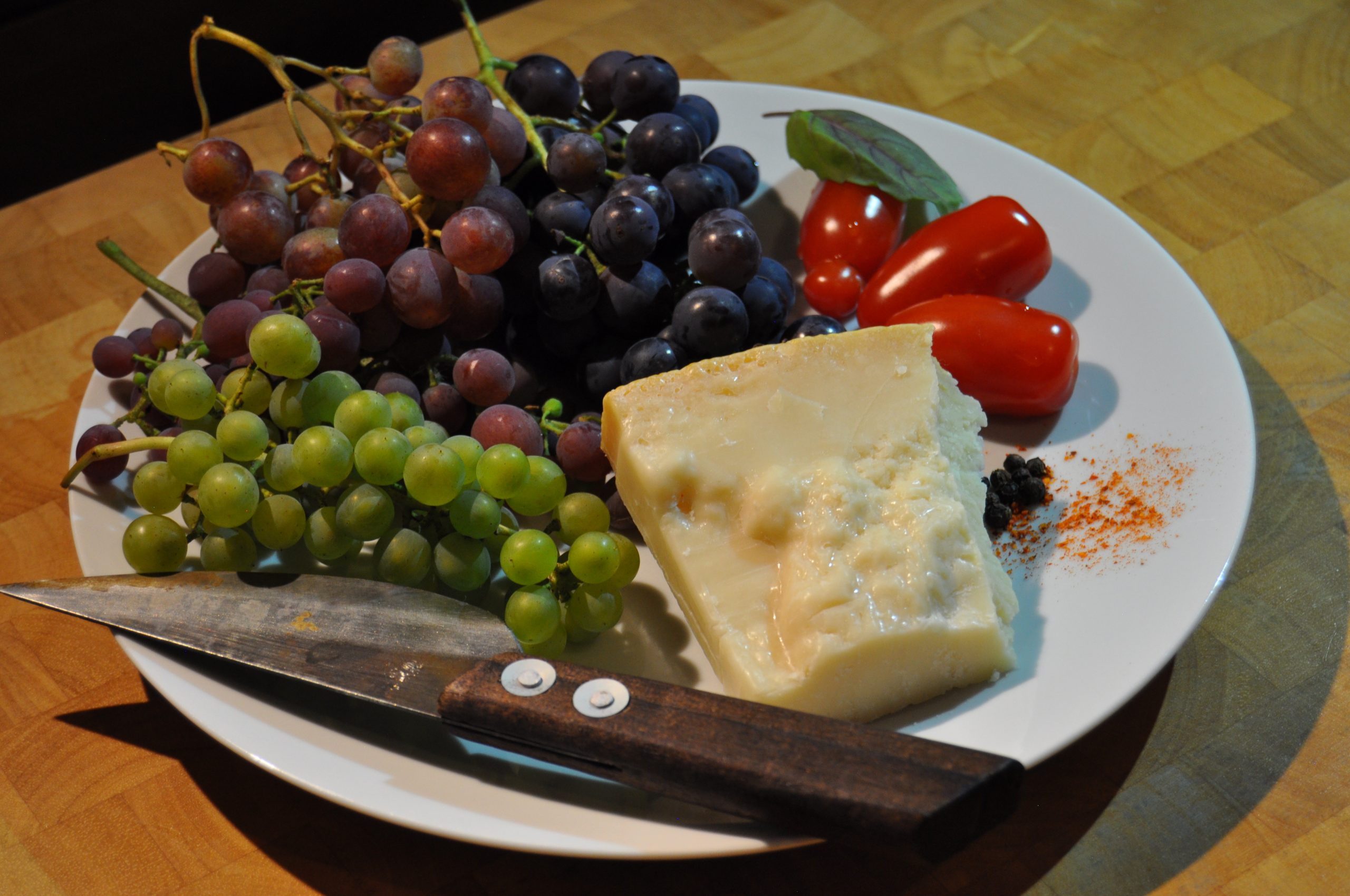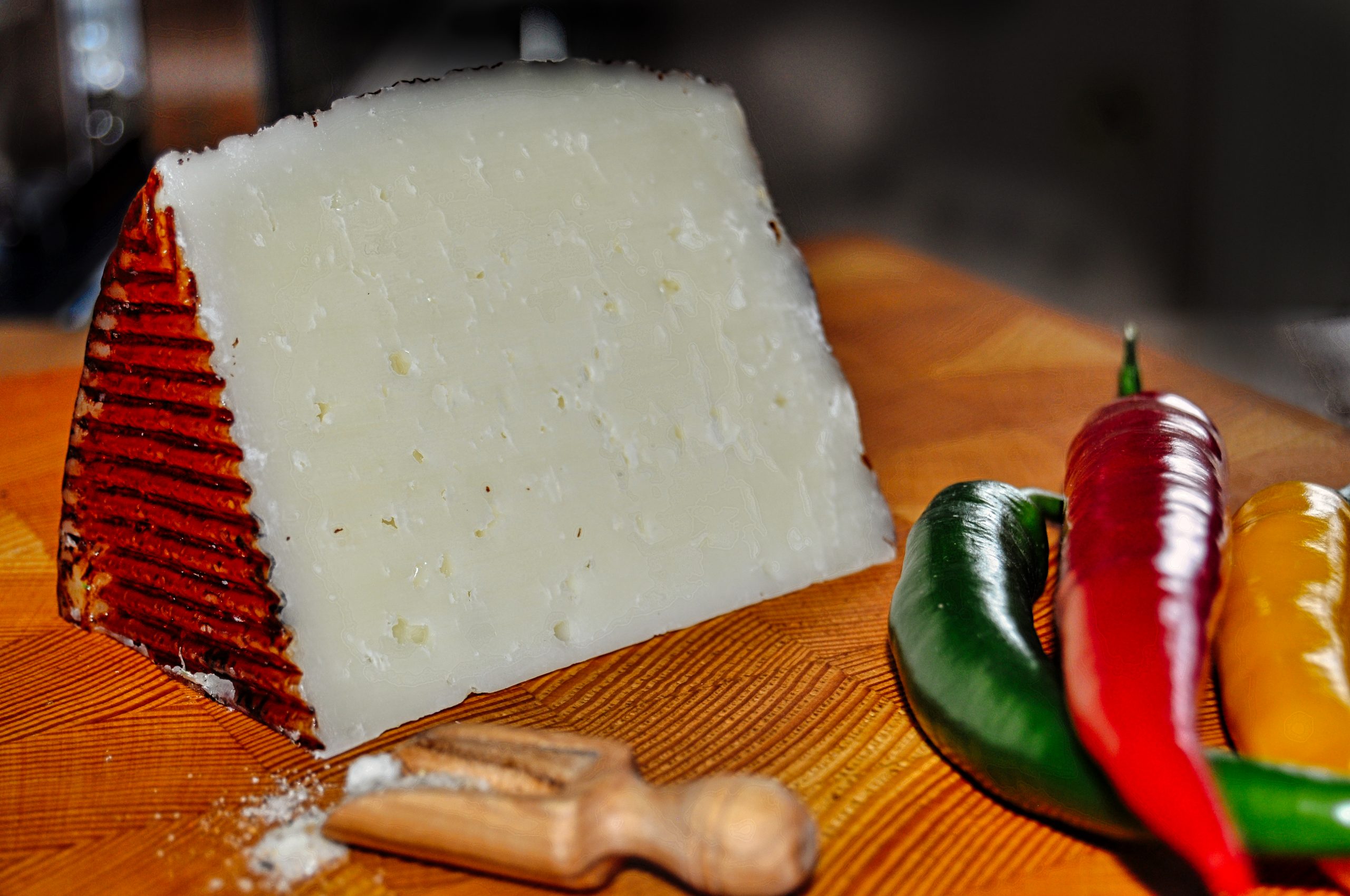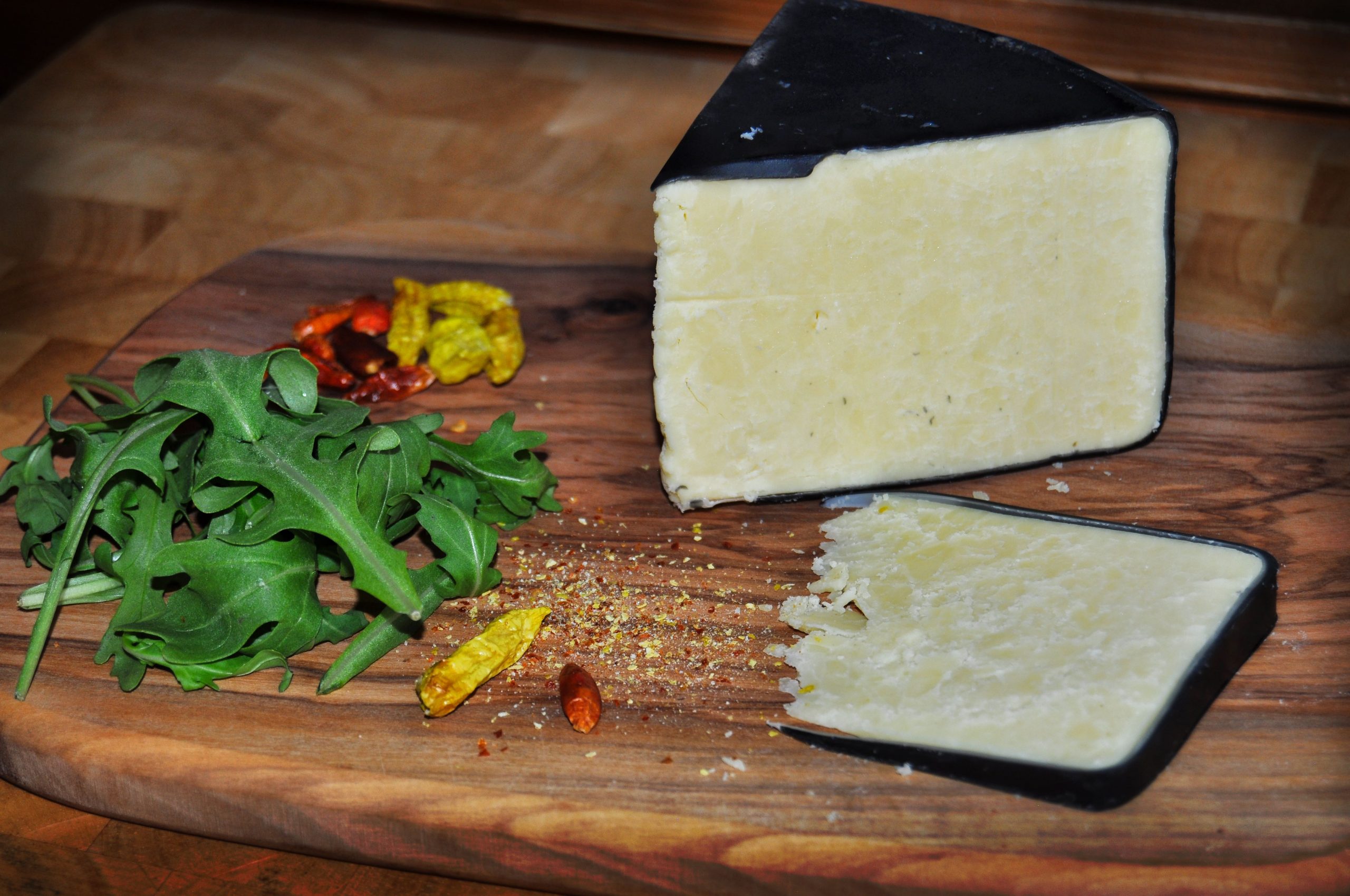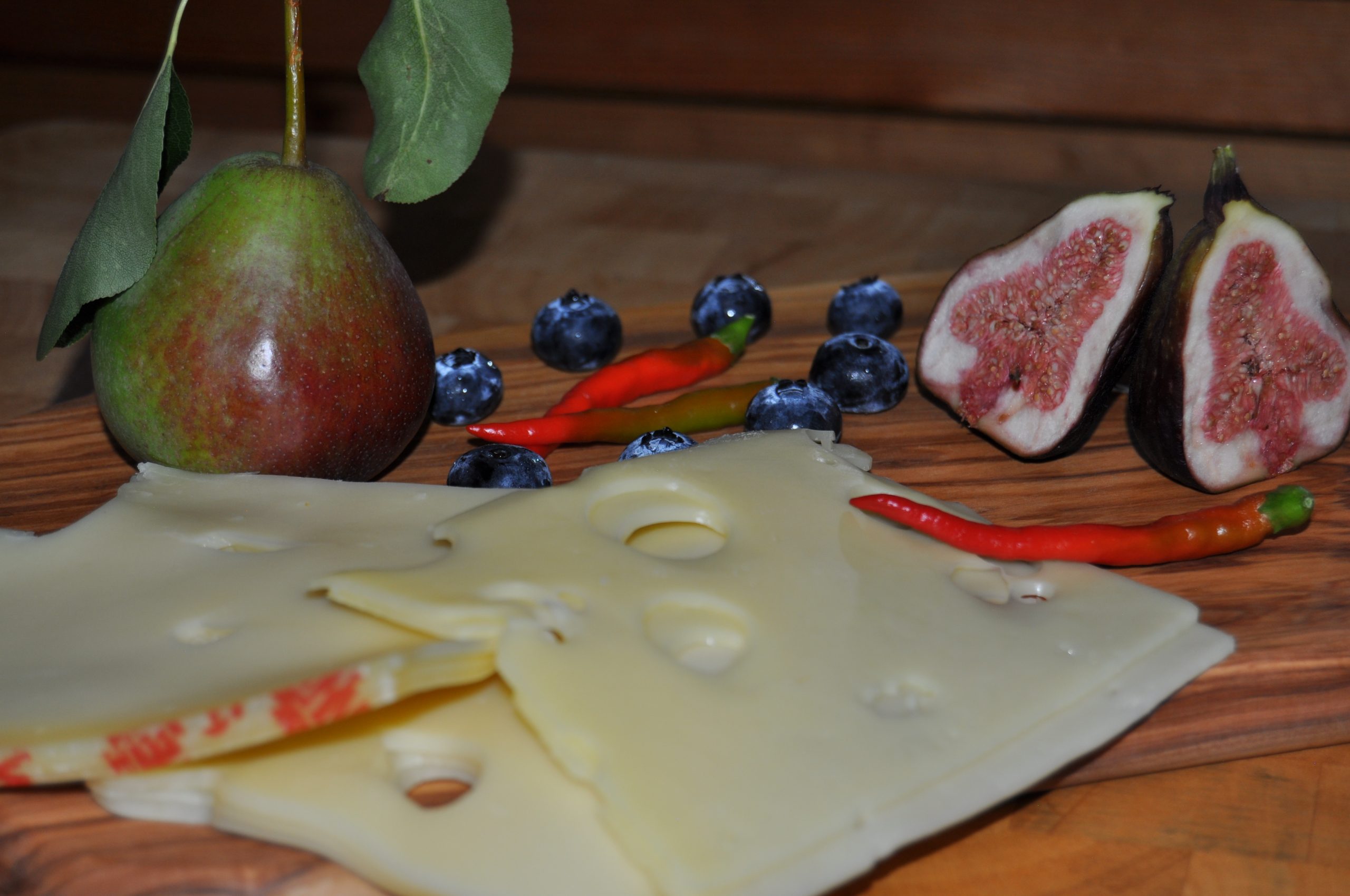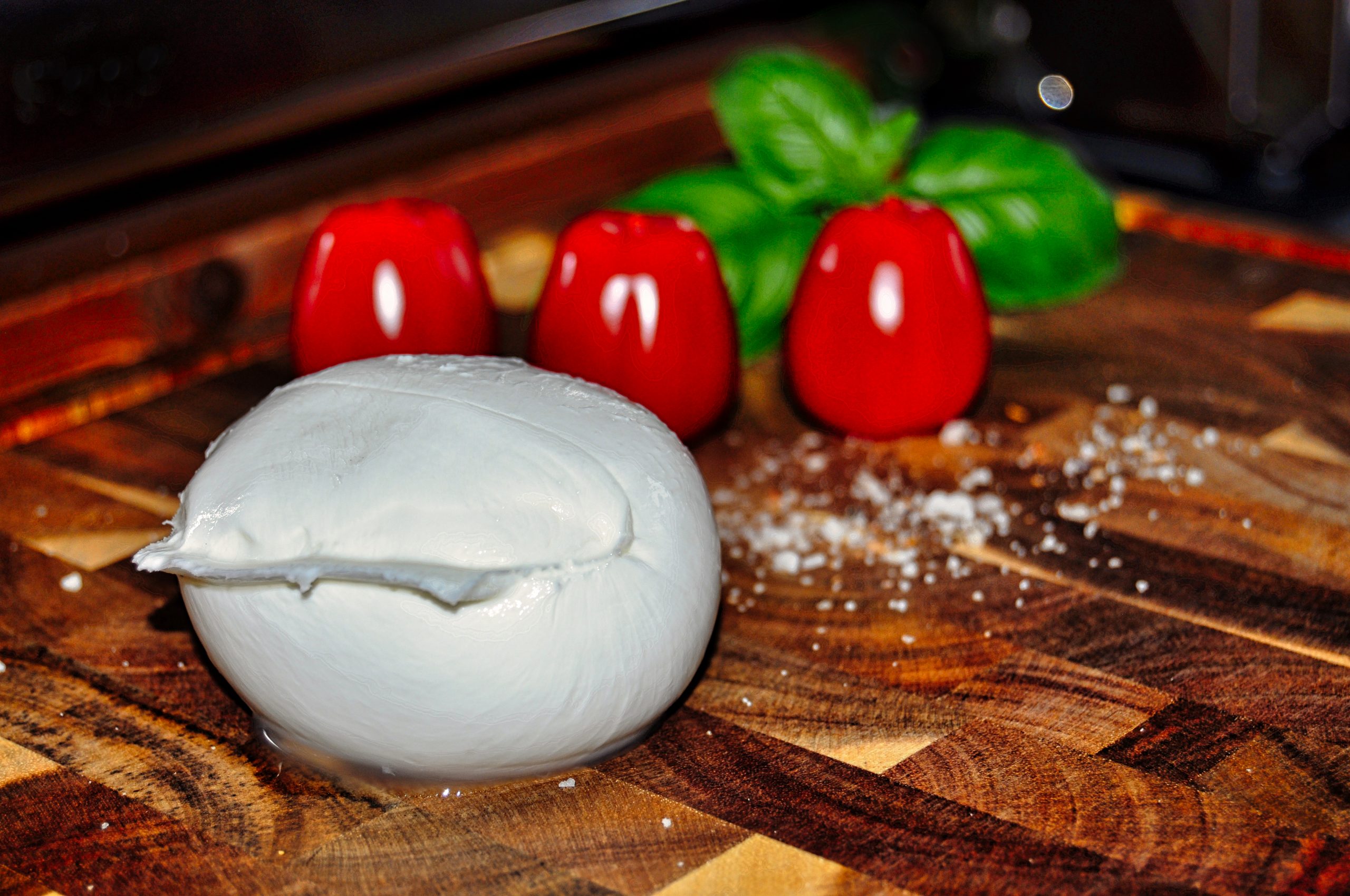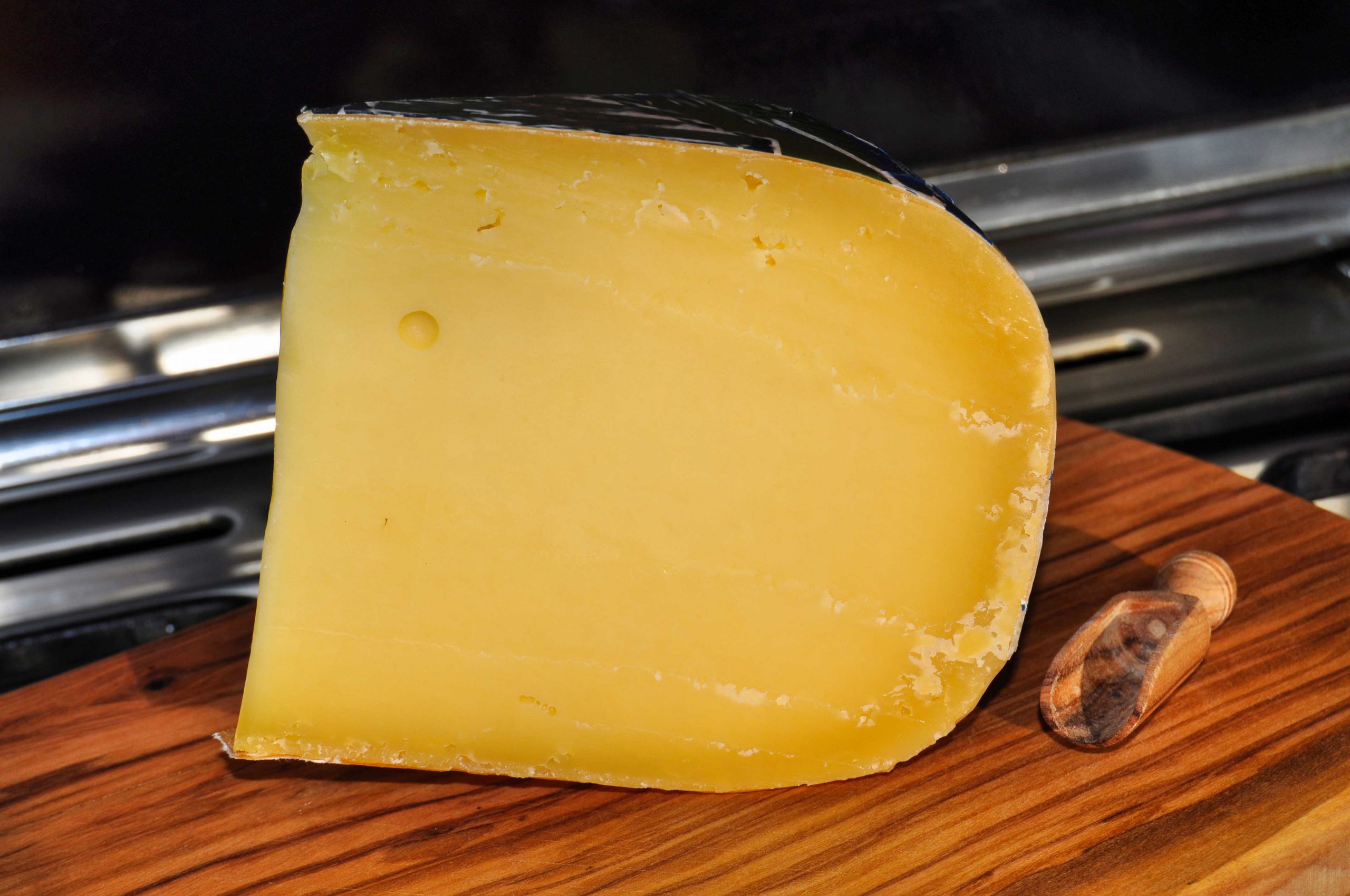When one thinks of cheese in Central Europe, the typical cheese classics from Switzerland such as Emmentaler or Gouda from Holland, which are mostly made from cow’s milk, immediately come to mind. Although there is also Gouda made from sheep’s milk, it is not nearly as popular as Gouda made from cow’s milk.
A European cheese that must be made from sheep’s milk is Greek Feta cheese: Feta cheese has a white colour (like almost all cheeses made from sheep’s milk) and tastes slightly sour and only slightly salty.
Feta cheese has a very long tradition in Greece: in a few isolated villages, the original production method has survived to this day: The classic production method involves pouring fresh, unpasteurised sheep’s milk into large leather bags, which are then hung outside during the heat of the day. This process causes the milk to curdle quickly and the milk separates into curds and whey. The curds are scooped out and packed into small baskets – this is the actual feta cheese. The whey is mixed with salt: the feta cheese is then stored in this brine of whey and salt for one to two weeks. It then ripens for a few more weeks at cool temperatures before it can be consumed.
The first written mention of feta cheese can be dated back to 1494.
Feta and Greek mythology
Greek mythology tells the story of the demigod Aristaios, who is said to have shown people how to make cheese from sheep’s milk.
In ancient Greece, milk was a sacred food: however, this did not necessarily apply to cow’s milk, but mainly to sheep’s and goat’s milk. When Zeus, the father of the gods, was persecuted by his father Kronos, he was secretly fed with the milk of the sacred goat Amaltheia. Zeus is also said to have later raised his son Heracles on sacred goat milk to give him immortality.
The first written mention of feta cheese can be dated back to 1494: An Italian travelling salesman is said to have discovered wooden barrels in the port of Candia on Crete in which slices of cheese were stored in a brine. The locals called the cheese prosfatos, which means fresh. To this day, Feta cheese is considered to be quite fresh – ripening periods of more than two months give the cheese a mostly unpleasant, salty taste.
Because of the discovery of the Italian travelling salesman, the cheese is said to have then received the name Feta in the 17th century, which goes back to the Italian word fetta (in English: slice).
Homer and feta
Although the name feta has existed as late as the 17th century, the cheese has a history dating back 2000 years: Homer and Alexander the Great are said to have been familiar with the cheese. Homer’s Odyssey mentions an early form of Greek cheese-making: in one passage, Homer tells of Odysseus and his men entering the cave of the Cyclops Polyphemus, who was making cheese from sheep’s and goat’s milk.
The term “feta” actually refers to the type of cuts and not the cheese itself. Thus, the cheese that is now called feta existed long before the 17th century.
Feta production today
The fact that feta in Greece is made from sheep’s milk is no coincidence: in Greece’s steep terrain and dry climate, keeping cattle is very difficult. Goats and sheep are animals that can adapt to these difficult conditions – so the Greeks decided to keep goats and sheep.
In the course of industrialisation, the production of feta also changed: it is crucial that the milk has a fat content of at least 6 percent. Feta cheese must be made mostly from sheep’s milk: Goat’s milk may be included in the final product to a maximum of 30 percent. Feta may not be produced in every region in Greece: There are some regions in mainland Greece and on the island of Lesbos for the production of Feta cheese, which can produce feta that can be labelled with the Protected Designation of Origin.
After the milk is delivered to the dairy, it is coagulated (i.e. the milk curdles) and put into moulds. After draining, the cheese is taken out of the mould, cut into pieces and coarsely salted. During this process, microorganisms develop on the surface of the feta, which determine the taste.
Over 6000 plants thrive in Greece, many of them exclusively growing there.
The white gold of Greece
Next, the feta is matured in two steps: First, a brine is added, not unlike the traditional brine made from sheep’s whey and salt. The cheeses are stored in caskets at a maximum of 18 degrees Celsius and 85% humidity for up to 15 days.
The second part of the ripening process takes place at much colder temperatures: At two to four degrees Celsius, the cheese matures for about two months. During this ripening period, the feta develops its classic taste.
Because of its fresh taste, feta is best enjoyed on its own or in a salad. Last but not least, feta can also be drizzled with a little olive oil and enjoyed. Feta is also sometimes used in cooking.
Greece has an extraordinarily diverse flora: over 6000 plants thrive in Greece, many of them exclusively growing there. The sheep from whose milk the feta is made feed on these plants – this accounts for a large part of the feta flavour.
Feta is responsible for about 10 per cent of Greece’s total food exports. With its thousand-year history, the “white gold of Greece”, as feta is also called, is in demand worldwide and is particularly popular as an ingredient in salads.
Cover picture: An arrangement with San Marzano tomatoes, herb mushrooms and feta cheese in the centre, © Simon von Ludwig

 Deutsch
Deutsch